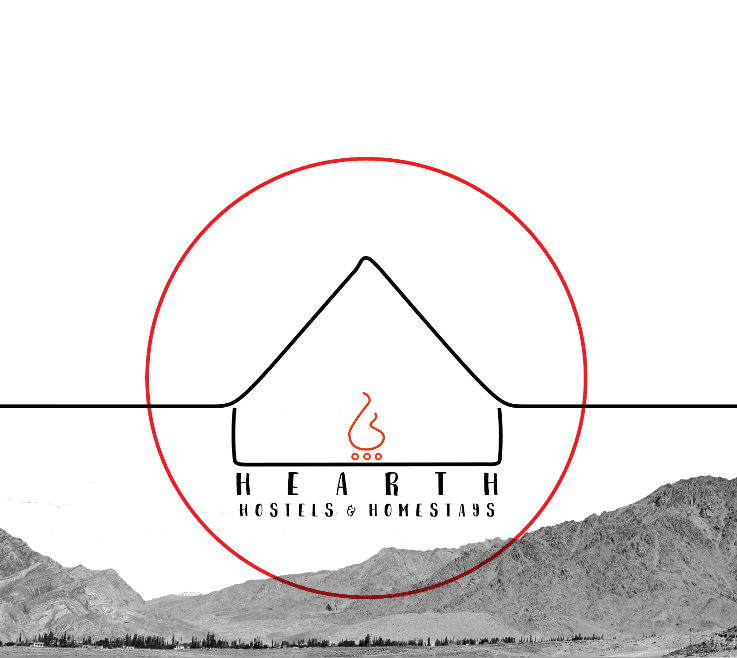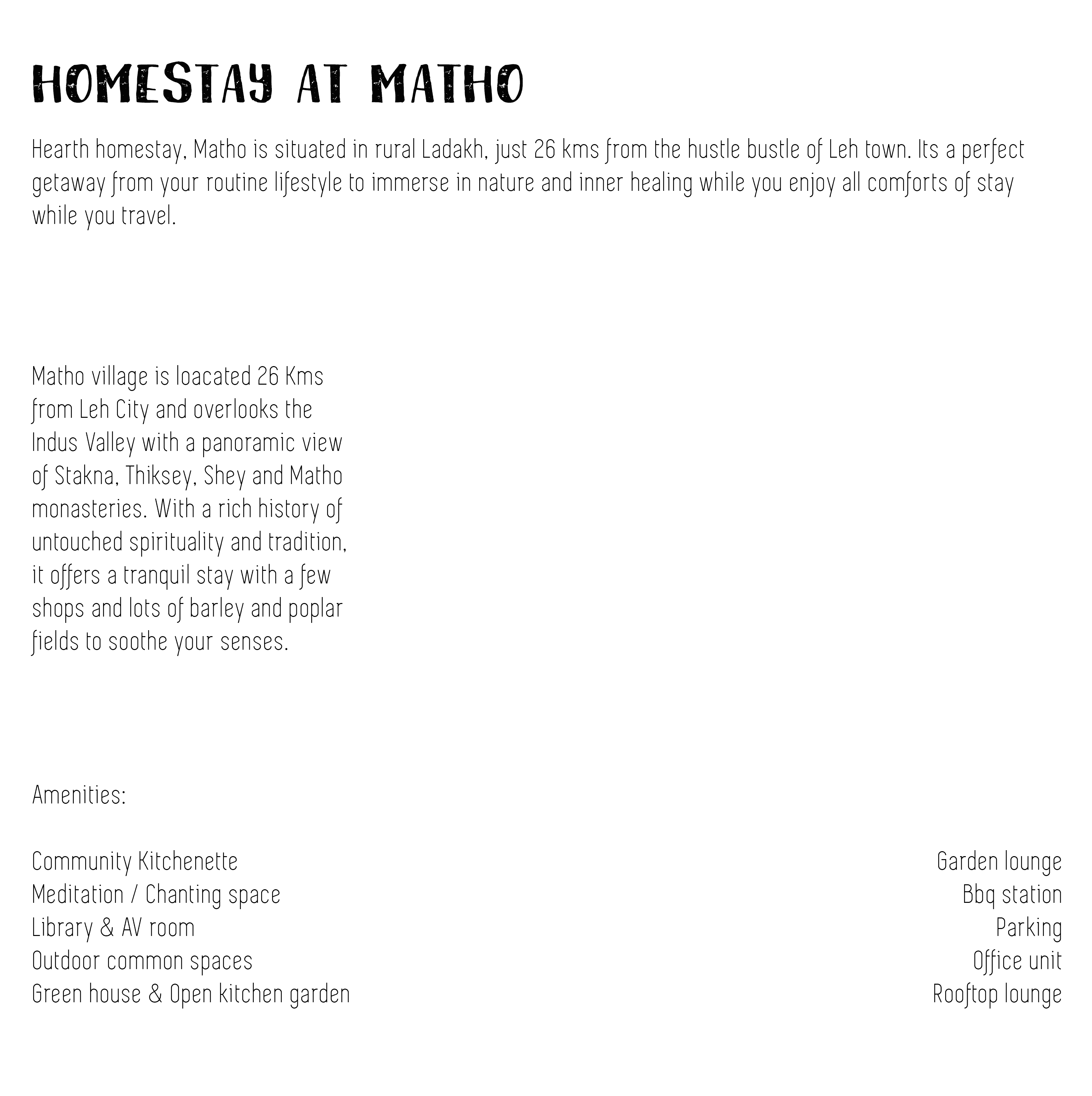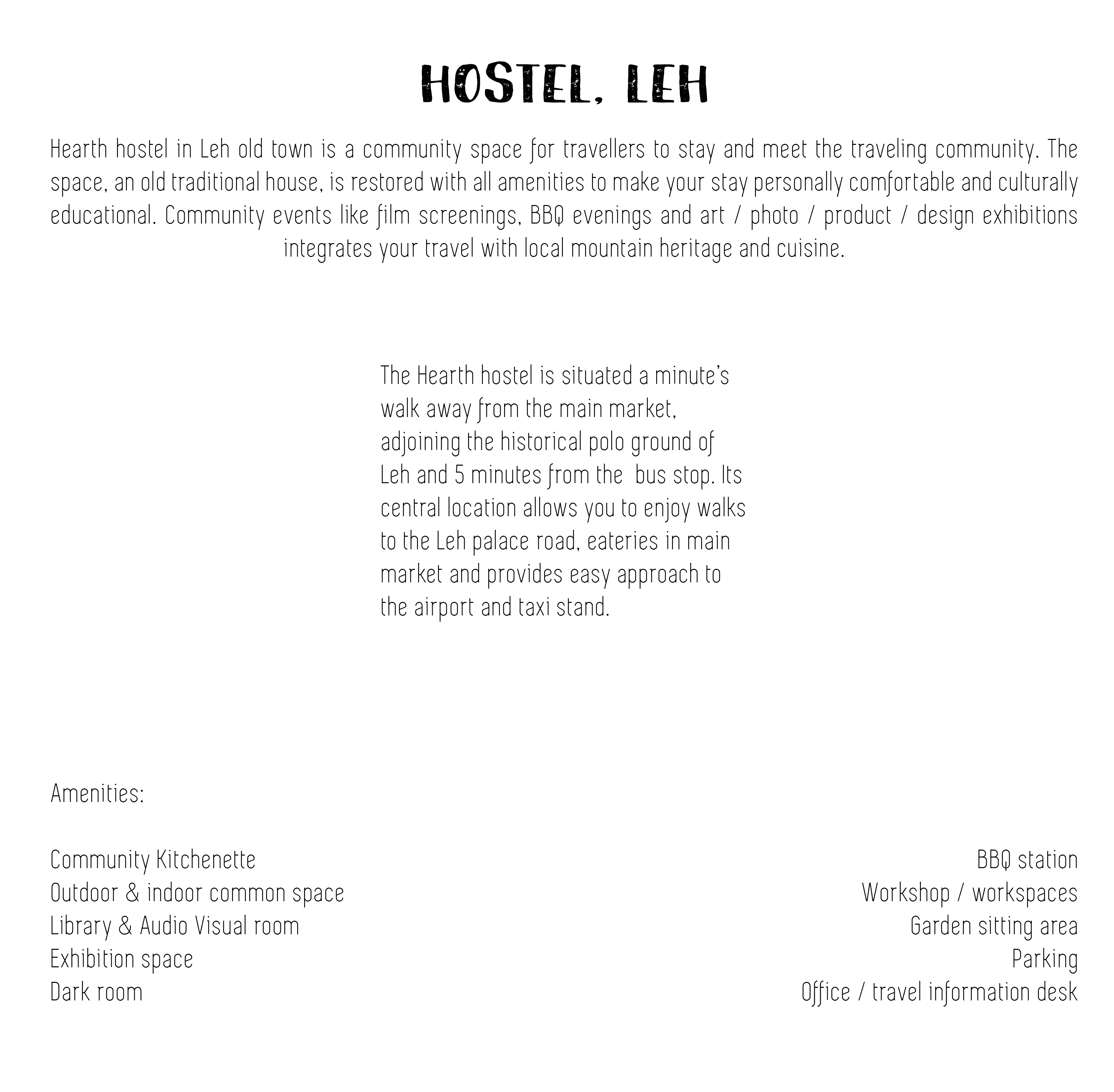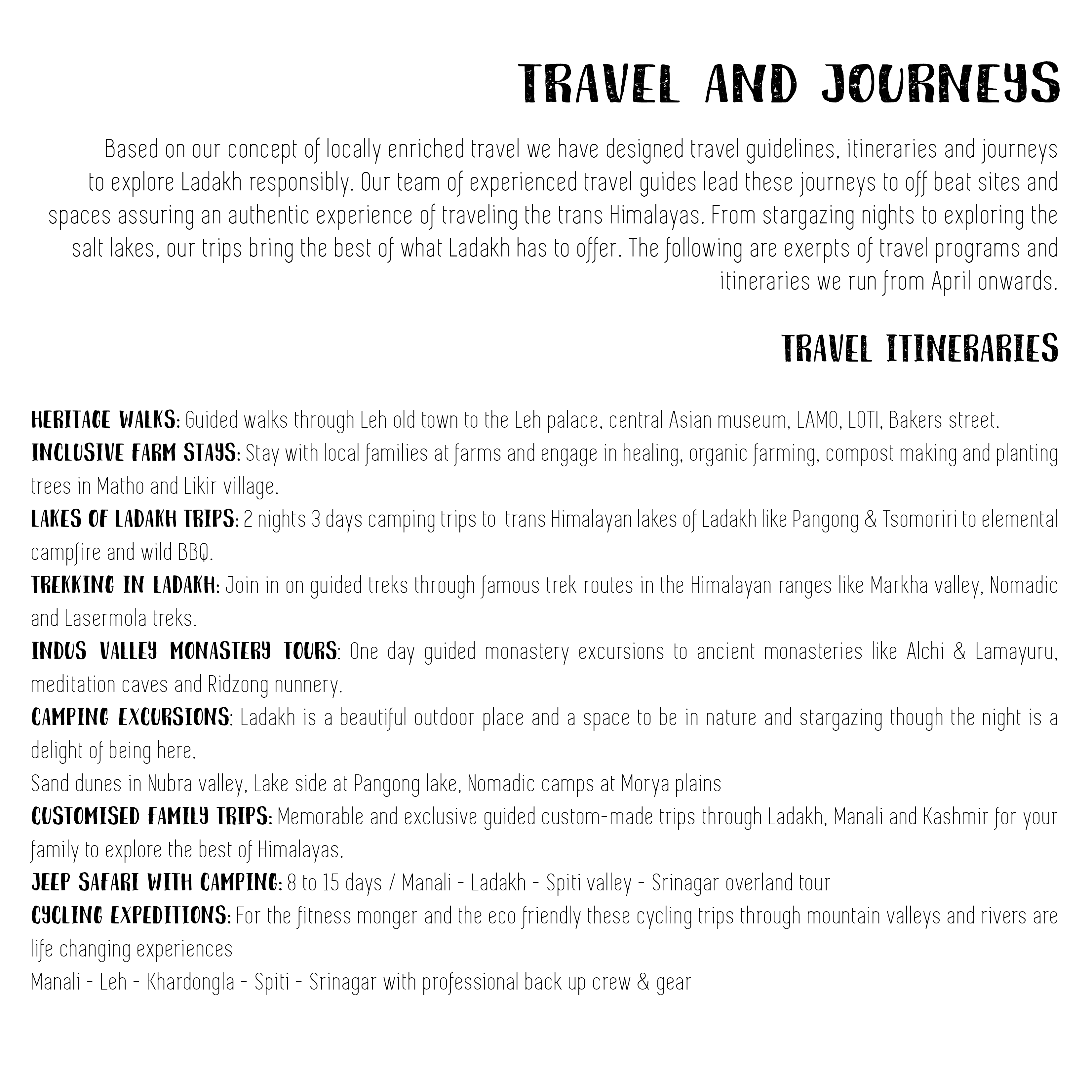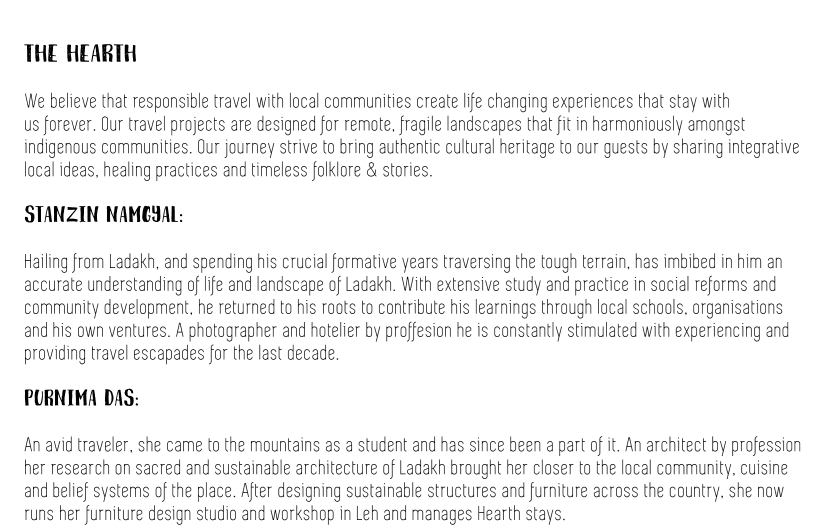Sustainability as it so frequently appears in literature is for safeguarding Earth’s resources, we want to find out what sustainability means to the tourism industry with Ladakh as an impact point. It is imperative for us to do so before we start our backpackers hostel (Leh) and homestay (Matho). We are conscious of setting up yet another lodging for tourists and dread contributing to the tourism led ecological and infrastructural chaos.
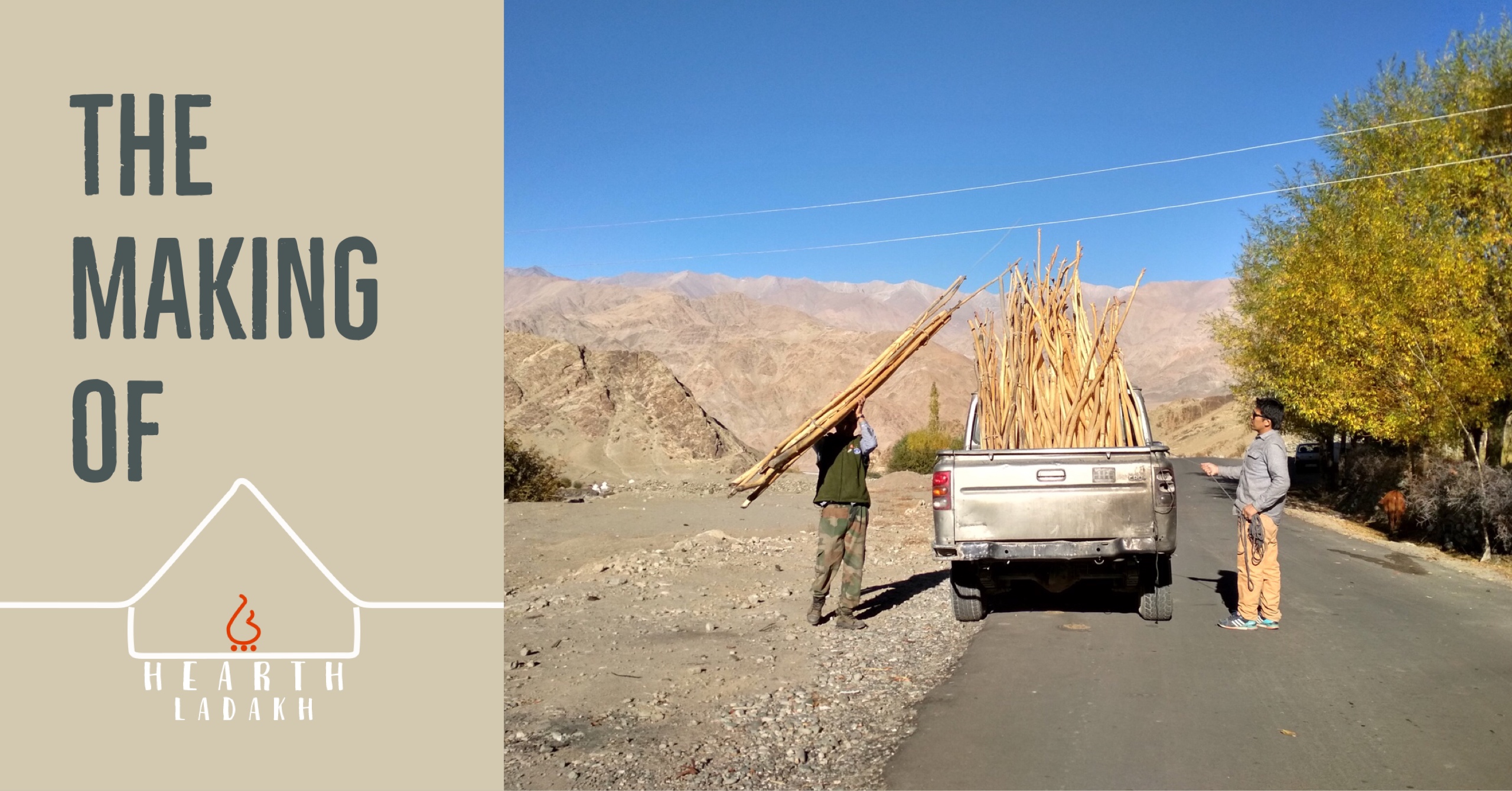
THE PROCESS OF ACQUIRING LOCAL MATERIALS FROM YOUR NEIGHBOURHOOD BRINGS YOU CLOSER TO THE PRODUCT.
Ladakh at an altitude of 11000+ ft is the only cold desert fragile eco system in India. Its bare minimum indigenous glacial water sources, wet lands and bio diversity are optimum only for consumption of its sparkly populated 3 lack locals (Source: 2011 govt census). Moreover the ancient knowledge systems of Ladakh centre around principles of ecological conservation and resources management, which is taken for granted by the standardised needs of tourism and hospitality industry.
For example, more than 200 hotels and guest houses in Ladakh are supplying an average ground water for 20 bathrooms each, for six summer months. These bathrooms are equipped with modern fittings like overhead showers, bath tubs and WC that dispense triple the amount of water than does a local bucket bath. If we take an average of 1 gallon for each bath we are using 21,60,000 gallons of ground water every season just for the guest bathrooms, not including maintenance and kitchen consumption.
The architecture of Leh today is overtaken by the easy finance led infrastructure growth with multi-storey hotels coming up at every corner leaving Leh. With no character of its own, it is as good as any other hill station.
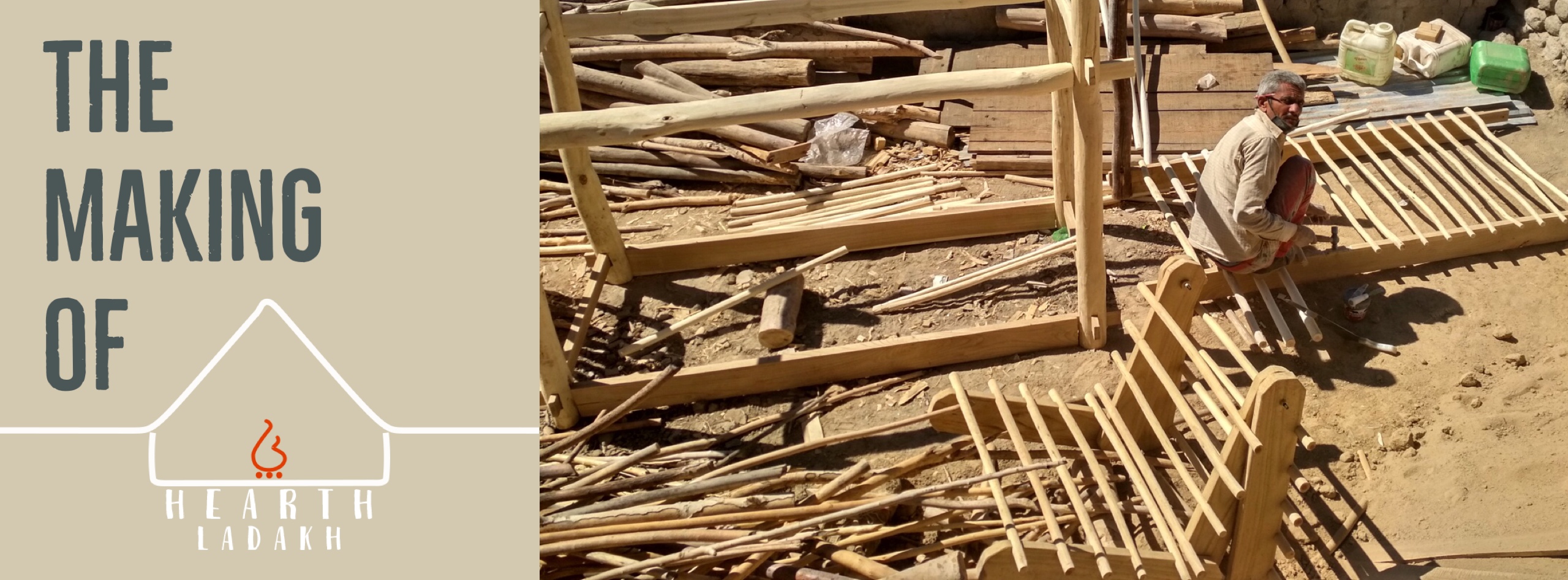
LOVE WHAT YOU DO AND DO WHAT YOU LOVE AND LEARN THE ART OF CONSTANTLY ENJOYING EVERY MINUTE OF YOUR LIFE.
_Arch. B.V Doshi
When we started our project, we wanted to promote ecologically viable structures with locally available materials (preferably within 10 kms radius of the place) making sure these spaces engage both - the management and the guests - in values and practices of eco tourism. This turned out to be as farsighted in execution as it sounds in theory. Our first decision towards an ecological enterprise was looking at a possible restoration of our ancestral home into a small hostel than rebuilding a mammoth structure with foreign building materials like concrete slabs and ceramic tiles. Apart from its intrinsic value of strong stonewalls and local wood, an old building has local architectural elements that helps it to breathe like a timeless tree. Not to forget that restoration is as friendly to your pocket as it is for the neighbouring environment.
Our in-house architect and one of the promoting partner Ms. Purnima Das (who previously did her research on sacred architecture of Ladakh) was clear about it from the very start, that the ancestral house was not going down, not today, not forever. Her resilience and clarity was pivotal in seeding the idea of restoring the house into a backpackers hostel for like minded eco-friendly, earth-caring, fun loving travellers in the traveling community. So after an in depth research on restoration, tourism consumption patterns, implementation of guidelines and systems assuring optimal resource management we started Hearth hostel and homestay.
Measuring mud bricks and poplar sicks available in the vicinity as our basic building blocks and sketching possibilities of incorporating common spaces, restrooms and alleyways that are integral to our idea of spacing out the hostel marked our humble beginning of restoration. Most of the wood we sourced came from up-cycling piles of discarded furnitures, doors and windows from other construction sites, family backyards and military dump yards. We did procure fresh wood from the village in certain unavoidable situations but while doing so we made sure that no new trees were cut and these were organic exchange of surplus available with other households in Ladakh.
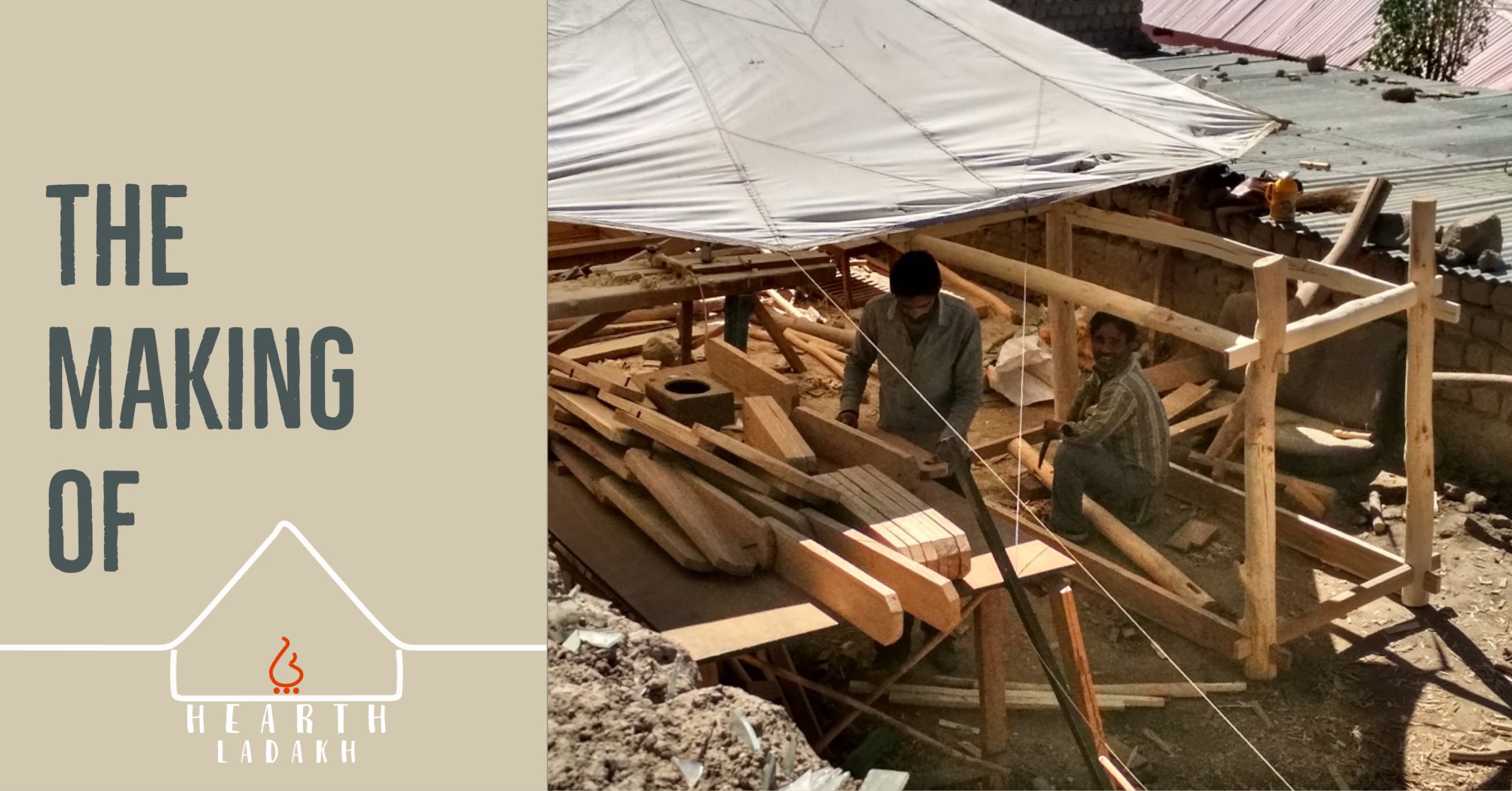
WHEN TEAM WORK MAKES THE DREAM WORK.
Purnima worked on the design, making ergonomic sense of converting a century old house into a hostel occupied by contemporary travellers with contemporary needs, like power sockets for each bed, a reading space, audio visual room, workshop area, workspace and socialising zones. Not to mention 4 baths and a community kitchen.
She spent hours drawing in her sketch book: switching entries here, expanding exits there, adding supplementary staircases to enhance common space approaches, conceiving bunk beds and lockers made of up cycled poplar branches. A space to host dinner for 50 hungry travellers with live music in the background was to be placed within a local Ladakhi kitchen.
By the time we had a basic restructuring design ready we had four carpenters working full-time on her drawings, a team of 12 local masons coming daily to restore the old house into a 30 bed backpackers hostel with traveling amenities we loved in the hostels we have stayed in.
As important it is for us to get the space right so it is to incorporate ancient local wisdom for resource management and latest technological advancement for energy conservation to assure a healthy traveling lifestyle for our guests.
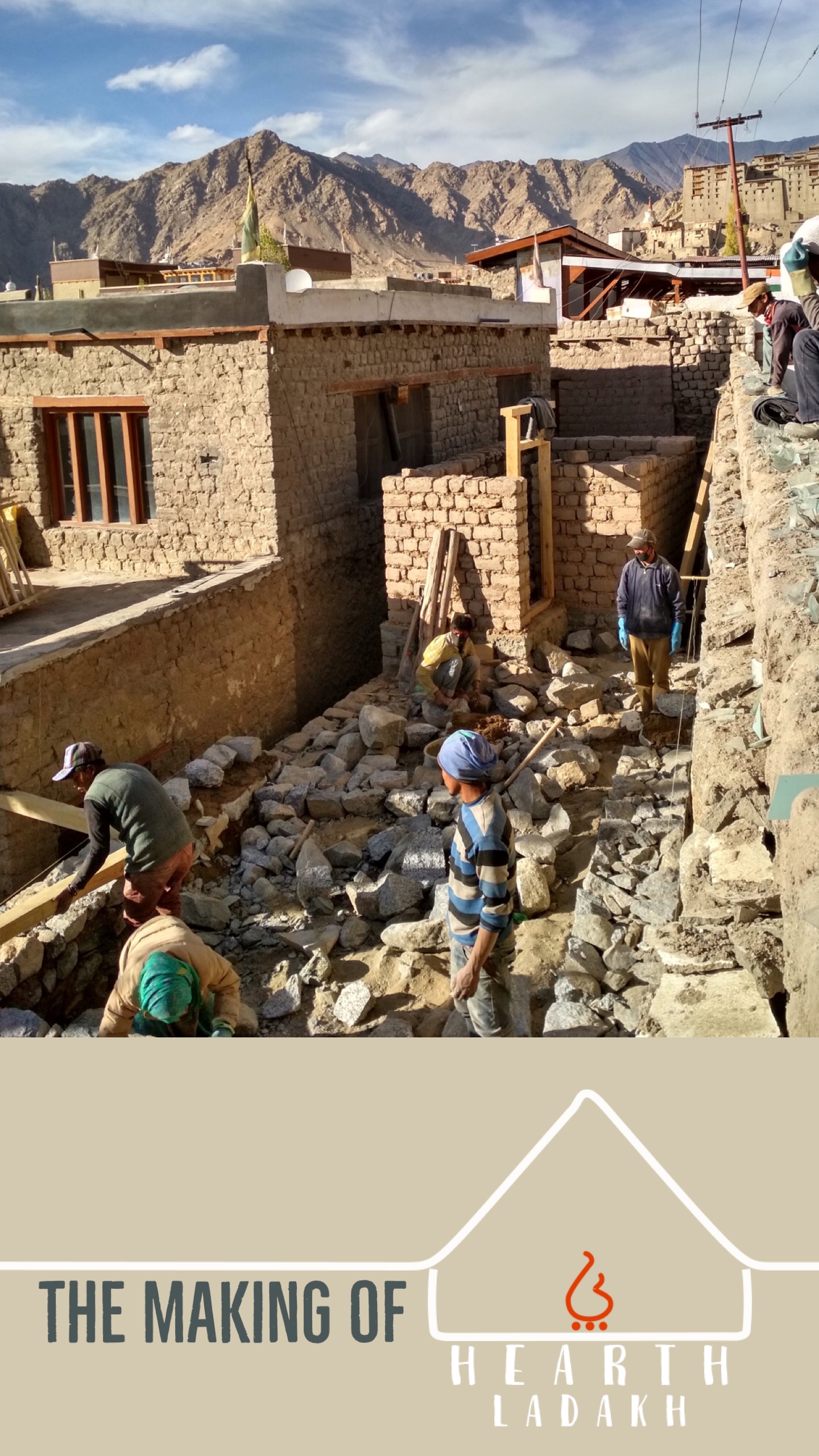
WHAT DID ONE WALL SAY TO ANOTHER?
LETS MEET AT THE CORNER
_Arch. Anant D Raje
This brings me to the next phase of our project on operational utilities of our hostel and homestay. Apart from a spell bounding landscape, Ladakh also has 360 sunny days making it the most solar potential region in the country. We installed solar water heaters, back up power channels, parabolic cookers and charging units at both traveler projects through a battery bank in place.
Almost all the backpackers we met on our travels were judicial eco travellers who made sure they left minimum carbon footprints through their journeys, so we believe our concepts of waste segregation, compost pit, judicial water usage and offsite afforestation initiative will eventually make a difference in the way tourism is perceived in Ladakh. We believe that it is not only about implementing ecotourism systems in place that makes a difference, but the knowledge sharing and information dissemination that allow our initiatives to inspire similar projects to take up sustainable tourism as a quid pro quo.
A hostel or homestay is not just its structure but also the activities and traveling amenities for engagement of its travellers. For this we learnt from other similar running projects that guests opting to stay in hostels or homestays prefer sharing and social exchange to the luxury of a private room. For them travel is about having conversations with like minded travellers, planning further travels based on experiences of other travellers. We had to create an atmosphere at the hostel that encourages socialising, events that brings interest groups together and a vibe of freedom and expression that allows every traveller to be comfortable about themselves and open to share what they believe in. A space they can feel at home in doing what they like or nothing at all.
Instead to cramping the space with as many beds that can fit in, we have kept indoor and outdoor common spaces on each floor for our guests to play board games like scrabbles or chess. They can choose to pick up a book from our collection or enjoy movie screenings in the evening. We have a designated exhibition space for artists and idealists to showcase the beauty they found in the world. A small garden with flowers and trees keeps the cityscape off and a wood workshop to constantly evolve our furnishings and create travel crafts. For any assistance in travel related logistics we have a travel help desk, money exchange and phone booth for our guests to make local calls to their friends staying elsewhere. We have display walls sharing ongoing attractions in town with weekly local bus schedules, procedures for getting a tourist permit and the days speciality from the kitchen. It has come up to be a space created by travellers for travellers.
Apart from a structural design to encourage casual engagements we thought it would be fun to have scheduled activities to share the local life around the hostel with our guests. For guests interested in enhancing their knowledge base, we have scheduled workshops and interesting talks on for different interest groups like photography shoots & Manual dark room processing, up-cycle furniture design, earth buildings, recycling, sustainable tourism and organic farming.
The traveling Pan is a bi weekly lunch program hosted at the community kitchenette for our foodie friends who live to eat and are ever ready to fold their sleeves up and throw open their culinary skills to make a delicacy from back home or an experimental dish inspired but their travels and share it with other travellers.
Our concept of heARTh residencies encourages artists traveling to Ladakh to create impressions of their local travels and exhibit in our ongoing exhibiting space.
Similarly for photographers and analogue lovers passing by, we have curated the red room exposè to process, share, teach and have fun with manual processing and in studio shoot while you stay with us. Our dark room is equipped with enlargers, chemicals and paper as an attempt to keep our love for analogue photography alive.
We also Screen-time three films (feature, art and documentary) every week to cinema bugs and environmental enthusiasts. These documentaries on environment are followed by talks by different environmental organisations working on these subjects.
Re-cycle is a program for cyclists to hire cycles from our pod and spread the message of carbon emission from motor driven commute. A portion of the collection from re-cycle goes to setting up cycle pods in local schools and public spaces.
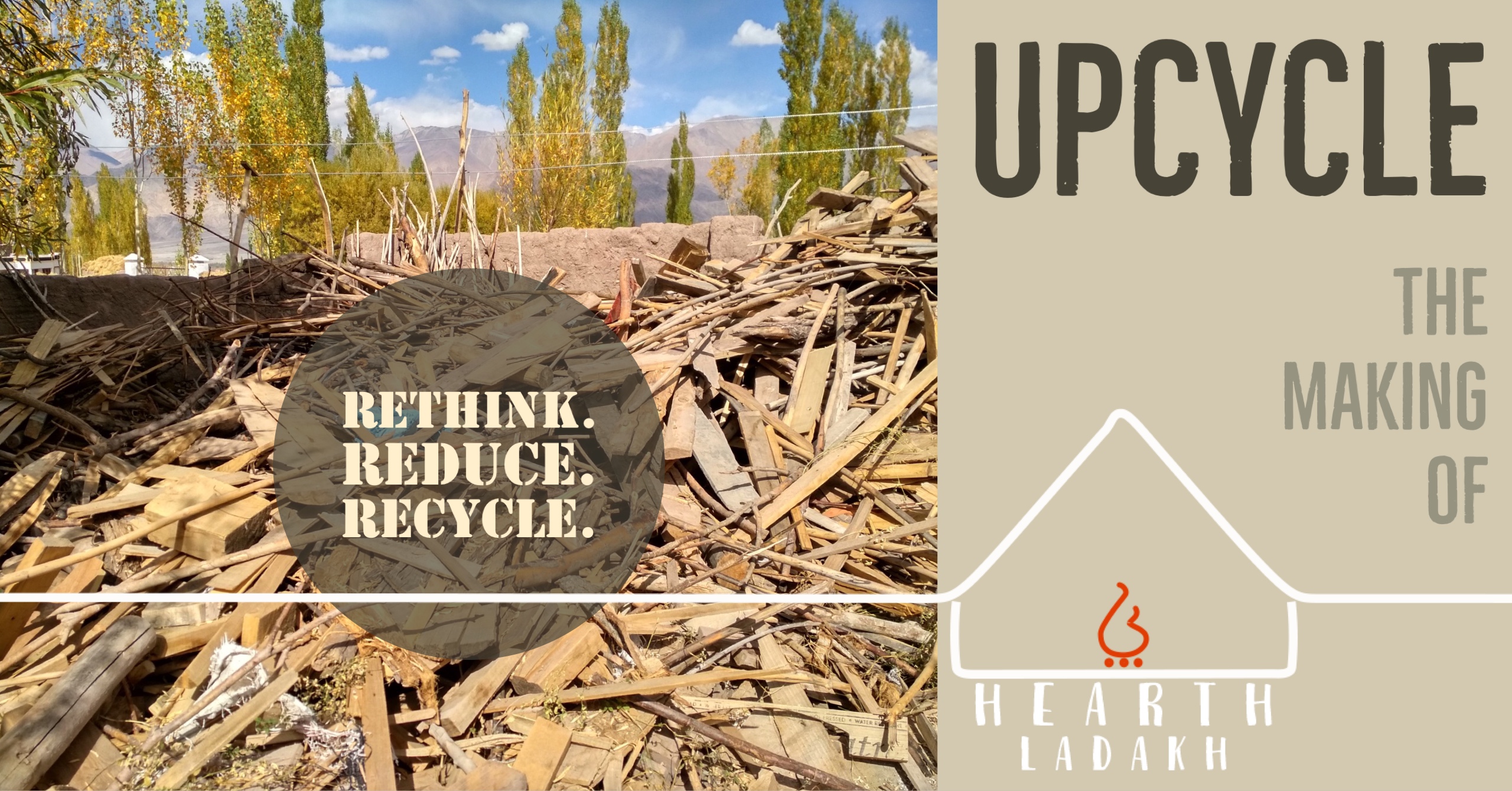
THERE IS NO SUCH THING AS WASTE, JUST STUFF IN THE WRONG PLACE.
Apart from these in-house events we believe in building a better direction tourism in Ladakh can take, so that Ladakh as a destination is not promoted for its fancy hotels but for its eco friendly ways and age old cultural heritage. We believe that our initiative with 30 beds of change will eventually bring a wave of eco friendly travellers to experience Ladakh as it was back in the day when tourism had started in 1984.
Books like Ancient futures by _Helena Hodge and Peaks and Lamas by _Marco Pallis have deeply moved our perception of conservation and preservation of Ladakh as a fragile Eco system and we will work towards promoting hostels and homestays with a local essence against big hotels with bath tubs and its general luxury based tourism.
Author: Stanzin Namgyal
Photo Credits: Purnima Das
11 March 2018
Tags:
All
Travel
Eco-tourism
Cold
Desert
Fragile
Ecosystem
Travelling-Ladakh-2018
Infrastructure
Architecture-Local
Upcycle
Wood-workshop
Leh-Ladakh
___________________________________________________________________________________________

At a recent travel show in Mumbai a lot was said about how travelling changes the traveller forever. Moreover the discussions led to a stream of traveling options that brings us closer to not only the landscapes we travel through but also the communities we live with. One of the streams was the different stay options that have outwitted the regular hotel experience of being confined to the comforts of the room with a television and air conditioning. Interestingly the discussion always came back to the comfort zone we all have indulged in and how traveling pushes us beyond our comfort zones.
This led me to think about how traveling the length and breadth of India for the last 15 years has redefined my idea of comfort and the integration of sharing as an integral part of my comfort zone. One of the major shifts in experiential travel came from - like the rest of evolution did - necessity. Traveling can be expensive and to moderate expenses I started staying in community based hostels and family run homestays, as these cut my traveling expense to almost half. A few runs with hostels and homestays brought me to the conclusion that not only my everyday experiences of traveling had improved exponentially, but the geography of my traveling radius increased to a much wider field. I could now visit places where hardly any tourism infrastructure existed and rides in rattling buses sitting next to a goat, a saffron clad ash wearing babaji or a hen perched on the luggage rack were the best stories I had to share share.
This was an amazing discovery as it took me places where I wouldn’t have otherwise gone and brought me the true colours of India. The diversity we hear of in books and songs came alive as women discuss water woes, the neighbours’s newlyweds and god fearing monkeys in small hamlets around the eastern ghats. The love for the guest - atithi deva bhava - is felt sleeping in a row with the host family on the jute sheets (chatai) spread on the earthen floor of a Santhali hut in Jharkhand.
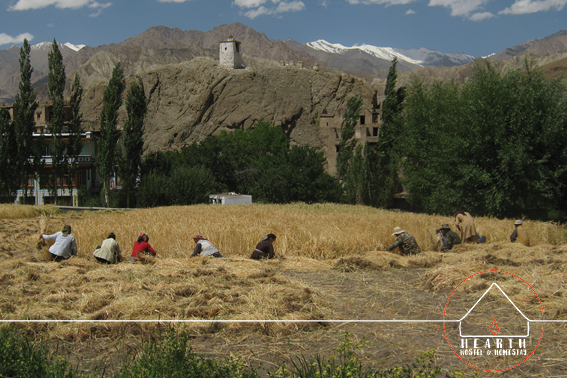
Homestays since then is central to my travel plans and remoter the place the more beautiful its people and better are their stories. I got to see India like the one we read in pre independence poetry of Muhammad Iqbal, Sarojini Naidu and Rabindra Nath Tagore. The poems and songs written in glorification of this land are living in far away homes of these small villages.
The other thing I discovered in homestay travels is that planning becomes homogeneous to the land and its people as you become a part of their plans and rituals. Once these families accept you as one of them, for however short a period, you become an additional member of that family. Don’t mind if you find yourself babysitting a new born or teaching English at the village school without being asked if you like being with children. Or even managing the livestock of the house when your house mama wants some milk for breakfast.
The other expansion of my traveling horizon steered with different cuisines that runs in the bloodline of faraway cultures. In Asansol there is a different sweet for every season and the jaggery they use to make these sweets come from a family living in a village 150kms away. The texture, smell, right amount of sweetening and the wether it is made in, contributes to the exact taste being passed on as a heirloom from generations of sweet loving homemakers in West Bengal.

Such stories and encounters are met on journeys that belong as much to the travelled as it does to the traveler. The recent surge in backpacking youth in India and the ongoing flow of foreign backpackers traveling for their love of mystical India, is helping expand the country’s heritage beyond its palaces and forts and taking it to remote households and farm stays where the colourful diversity India lives. If for the reader traveling is about exploring further landscapes and in doing so enriching the inner soul then staying in homestays working on farms, singing community harvest songs is the way to go about it. To fall in love, smile, laugh and being open every moment on your journey is how traveling can change the traveller forever.
The amount of words I can pour into the idea of experiential travel can fill the literature of a small library in a monastery school library in a remote village of Ladakh but the following words of Marcel Proust sums up the feeling in a sentence I have always loved. “The real voyage of discovery consists not in seeking new landscapes, but in having new eyes.”
Author: Stanzin Namgyal
P.C.: Stanzin Namgyal, Purnima Das, Kristyna Carrot
28 February 2018
Tags:
Backpacking
Communities
Family
Sustainable
Homestay
Journeys
Stories
Landscapes
Responsible-Travelling
2018
Leh-Ladakh
Blogs
___________________________________________________________________________________________
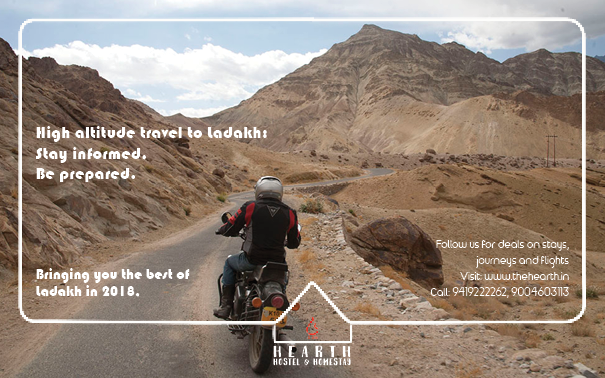
Ladakh also known as the land of endless discoveries stands 11000ft high in the Indian Himalayas. Awe inspiring landscape and serene waterbodies have appealed travellers to the region since it first opened to international tourist in 1984. Environmentalist have written extensively on the fragile high altitude eco system pertaining the ever expanding tourist industry.
As beautiful the high altitude region of Ladakh is, the challenges of traveling to Ladakh can be felt with the first breath on your arrival. A major concern of travellers visiting Ladakh is combating the rise in altitude and the many effects it has on our physiology. Acute mountain sickness (AMS) typically occurs at about 8,000 feet, or 2,400 meters, above sea level with early symptoms of dizziness, nausea, headaches, and shortness of breath. However, mountain adventure enthusiasts and travellers can take measures to train the body to acclimatise to the altitude.
The human body is an epitome of adaptation and so it can take the altitude of Ladakh if we can pace the elevation rightly and restrict ourselves to limited bodily exertion and stress. Acclimatising for the body for high altitude travel starts a week before your trip with easy walks in the mornings to flex your muscles and the right cardio routine.
Acetazolamide or Diamox: Anti altitude prevention medication
Anti altitude sickness pills or Acetazolamide can help and should be taken a day before your flight to Leh or your ride from Manali to Serchu. This pill cane be taken at an interval of 6 hours (prescription of medical expert advised). Diamox is a popular Acetazolamide that helps in preventing acute mountain sickness (AMS), high altitude pulmonary edema (HAPE), and high altitude cerebral edema (HACE). However you should consult professional medical expert before taking any prevention pills.
Rest is best
On arrival in Leh it is very important to avid physical exertion and any stressful routine. A complete rest for the first two days with good sleep cycles and staying indoors for the first couple of days will allow your body the time it needs to adapt to the thin air, scarcity of oxygen and dryness. Moderating your routine from mild to heavy workouts or walks will allow the cardio muscular movements to adapt to the oxygen inflow.
Proper diet and hydration
A good diet plan with optimum intake of carbohydrates can help the body get energy and at the same time avoiding oily, fat rich food stressing our digestive system is advised. One of the major physiological shifts our body goes through as we enter Ladakh is dehydration. Travellers tend to loose a lot of fluids in Ladakh and due to less perception they hardly feel thirsty. Travellers should keep sipping on water, soups and other fluids and keep the body adequately hydrated.
Leave the beer
As we have already discussed how hydration plays an important role in combating mountain sickness, it goes without saying that alcohol is to be avoided strictly as it dehydration rates the body and can destroy your entire travel experience. You should cut down your consumption to a quarter of what you usually take only on the third day onwards. It is advised that for the first two days you should strictly stay away from any alcoholic drinks and bars.
Prevention for skin
Apart from the thin air, being close to the sun is another change effecting our immediate health when we are traveling to Ladakh. Travellers don’t realise the impact of exposure to Sun as the atmosphere does is not protecting them from harmful rays. There is a 10 present increase in exposure to rays at every 1000 feet. So a traveler coming to Ladakh from Mumbai or Ahmedabad will experience an increase 100 percent increase in Sun’s rays effecting our skin. We suggest cold pressed apricot oil, moisturisers, good brand Sun screens with SPA 150 and above for all skin types to avoid burns or dryness. Also at this hight sunlight can be erring to the eyes, so don’t forget to carry a good pair of polarised, UV protected glares and hats to cover your head and eyers.
Dust
Barren landscape of Ladakh makes it a dusty terrain and you never know when you will find yourself in the middle of a dusty breeze. Also contributing to this problem is the heavy infrastructure development Leh is going through. The roads are dug up, hotels and other tourism construction projects are coming up at every corner. We advise travellers to carry a pair of scarf, strolls and face masks to escape from tiny dust particles from entering your nasal cavity. Also keeping the nose and ears moist helps in optimising hydration of these parts.
A journey can be explored better, if we read and prepare about the destination before landing there. So keeping in mind the above measures will help you to acclimatise and enjoy the natural splendour of the trans Himalayan region of Ladakh. Drink a lot of water, sleep well and avoid alcohol and you will be fine to explore the beautiful mountain terrain and you will come back for ever more.
P.C: Stanzin Khakyab
22 February 2018
Tags:
All
Travel
High-Altitude-Sickness
Care
Prerequisites
Travelling-Ladakh-2018
Leh-Ladakh
___________________________________________________________________________________________
Q: How far is the bus station / taxi stand from the hostel?
Our hostel is placed 10 minutes walk from the bus stop / taxi stand (its the same place). You don’t have to hire a cab to reach us (they may try to). Just walk up towards polo ground and you will find us.
Q: Are there women only dorms at the hostel?
Yes. Though we have one dorm reserved only for women, we can assign more only women dorms as per requirements. We also double up our small private room to women travellers unwilling to share coed dorms.
Q: Is Hearth hostel a curfew zone after a time in the night?
No. Hearth hostel is open for its residents all throughout the night for star gazing, wandering travellers. Our reception closes at 7 pm, but a part of the main gate is open throughout the night and the whole place is under CCTV surveillance for your safety .
Q: Does Hearth hostel provide personal lockers?
Yes. Each one gets one. We also have a cloakroom to leave behind your luggage at a minimal cost, while you are off on a trek or an overnight trip to the lakes.
Q: Can we buy lock pads and toiletries at Hearth hostel?
Yes we have a small section of our office dedicated to utility and local art products. You can pick up a deck of cards, maps, postcards, organic soaps and traveling tents on reasonable rates.
Q: Can we exhibit and sell our art at Hearth hostel?
Yes artists can exhibit and put their work on sale at our exhibition space. But we don’t approve of our guests being buggered with sales hacks so there is no personal pitching. The work speaks for itself.
Q: Does Hearth hostel provide linen & towels?
Yes we do. Crisp and Clean ones.
Q: Does Hearth hostel have a running kitchen service?
We believe in healthy, yummy, filling meals. Our supplies are procured from local farms and rice, cooking oil from farmers in Himachal. We make sure that everything on your plate is 100% GMO free and not chemically processed or harvested. Rest assured the meals you have with us will fill your tummy and delight your soul.
Q: Does Hearth hostel accept credit card payments?
Yes we do. Yet at times the internet is not working properly to make transections. Anyway payments are not chased after and we believe in the believing policy.
Q: Can we rent bicycles and motor bikes at Hearth hostel?
Yes you can. We also have maps and our travel desk manager will be keen to chart your navigation though your day’s ride to monasteries, villages and riversides.
Q: Are friends staying elsewhere allowed in our hostel?
Yes friends of friends are always welcome to the common area and for events like talks, exhibitions and screenings. Unfortunately for privacy reasons your friends are not allowed to chill in dorms or stay in till late hours. We reserved the right to admission.
Q: Does Hearth hostel accept payment in foreign currency?
Yes we accept major currency like Euro and US Dollar. For other currency exchange our travel desk is equipped to help you exchange currency at your doorstep.
Q. Is breakfast included with stay?
Please refer to our deals page ( http://thehearth.in/home.html?dc=hostel_deals ) for great deals during your stay. Also you can writ to us or call us for seeking group deals and special offers.
Q: Are there daily buses to visit monasteries and villages in Leh?
We have a display of bus timings for daily departures to different villages in Ladakh. Please check for the mark that says you need an inner line permit to visit certain far off villages (closer to the border area).
Q: Is The hearth pet friendly?
Yes. We have 2 in-house dogs sharing our space and they love rubs, walks and treats. Your pets are welcome but to assure safety we need to have vet’s certificates. Importantly your pets needs to be trained to accommodate space with our guests and other pets.
12 December 2017
Tags:
FAQ
___________________________________________________________________________________________














